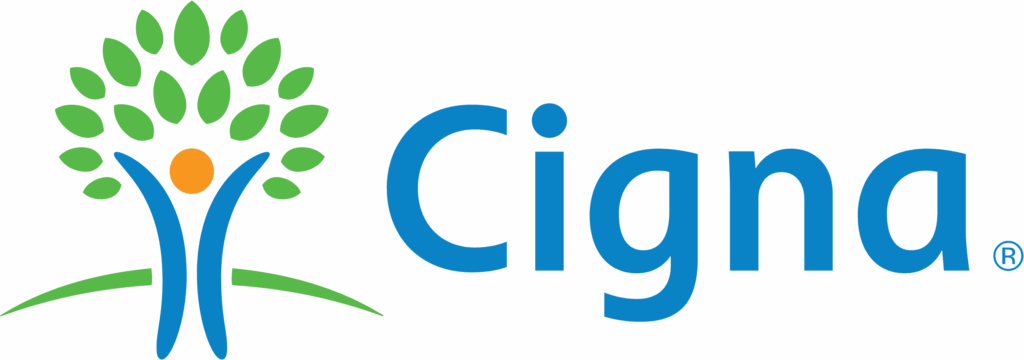In Network With All Major Insurance |

An Intensive Outpatient Program (IOP) for mental health delivers structured, evidence-based treatment while allowing participants to live at home and maintain work, school, or family responsibilities. This article explains what an IOP is, how it operates, and why it can be the right level of care for people with moderate to severe mental health symptoms who do not require inpatient hospitalization. Readers will learn program components, typical weekly hours, common therapeutic modalities such as CBT, DBT, and ACT, and how IOP compares to Partial Hospitalization Program (PHP) and inpatient care. The guide also covers condition-specific approaches (depression, anxiety, bipolar disorder, PTSD), telehealth IOP options, and practical checklists for choosing a program. Throughout, recent research and clinical reasoning illuminate outcomes, measurement tools, and realistic expectations for recovery in 2025. By the end you will have actionable criteria to evaluate IOP fit, understand typical session structure, and know which questions to ask clinicians and insurers when considering IOP for mental health.
An Intensive Outpatient Program for mental health is a structured, non-residential treatment program that provides frequent therapeutic contact to address psychiatric symptoms while preserving daily functioning. IOPs work by combining group therapy, individual sessions, psychoeducation, and medication management into repeated weekly hours that intensify support compared with standard outpatient therapy. The specific benefit of an IOP is enabling measurable symptom reduction and skill development without disrupting work, schooling, or family roles. This definition clarifies how IOP fits in the continuum of care and sets expectations for intensity and goals. Understanding these elements prepares a person to evaluate program fit and explore more detailed differences with PHP and inpatient services.
IOP differs from Partial Hospitalization Program (PHP) and inpatient psychiatric hospitalization primarily in intensity, supervision level, and living arrangements. PHP typically requires patient attendance for most of the day in a clinic setting with more medical oversight, while inpatient care provides 24/7 supervision and is reserved for acute safety risks; IOP provides daytime structure but allows participants to return home each evening. The mechanism that differentiates these levels is supervision and access to acute medical services, which affects the pace of stabilization and clinical staffing ratios. Clinically, IOP is chosen when outpatient therapy has been insufficient but inpatient stabilization is unnecessary, and the patient can safely manage evenings at home. These distinctions help clinicians and patients decide when to step up or step down in the continuum of care.
A typical IOP includes group therapy, individual therapy, medication management, psychoeducation, and care coordination delivered across scheduled sessions each week. Group therapy often focuses on skill-building—such as cognitive restructuring or DBT skills—while individual sessions personalize treatment goals and monitor progress; medication management addresses psychiatric pharmacotherapy and side-effect monitoring. Sample weekly structure might include three group sessions and one individual appointment spread across 9–15 hours weekly, with case management calls between sessions for care continuity. Staff typically include therapists, psychiatrists, and case managers collaborating to adjust treatment as symptoms change. Recognizing these components clarifies how an IOP produces skill acquisition, symptom monitoring, and practical support.
Eligibility for IOP usually requires clinically significant symptoms that impair functioning but do not pose an immediate safety risk requiring inpatient care. Common referral reasons include worsening depression or anxiety, relapse risk after inpatient discharge, or insufficient response to standard outpatient therapy; referrals may come from self-referral, outpatient clinicians, emergency departments, or inpatient step-downs. Contraindications include active suicidal intent with plan and lack of reliable evening supports, because such cases need higher-intensity supervision. Eligibility also depends on the program’s scope—some IOPs specialize in trauma, mood disorders, or co-occurring substance use—so matching clinical needs to program focus supports better outcomes. Clear triage and communication among providers facilitate safe placement in the appropriate level of care.

An IOP supports recovery by delivering focused, evidence-based therapeutic work while allowing patients to maintain daily responsibilities and practice new skills in real-world settings. This mechanism—intensive therapy plus real-life practice—accelerates skill generalization and functional recovery compared with weekly outpatient sessions alone. Benefits include reduced symptom severity, improved coping and emotion regulation, and stronger social supports developed in group contexts. Clinicians use measurable outcomes to track progress and adjust care, which enhances treatment precision and supports sustained recovery. Understanding these benefits highlights why many patients choose IOP as a bridge between outpatient therapy and higher-intensity care.
IOP helps participants maintain employment, schooling, and family roles by scheduling treatment in concentrated blocks that fit around work or caregiving obligations. Programs often offer flexible scheduling such as evening or partial-day sessions so participants can continue daily responsibilities while receiving intensive care. This structure supports pragmatic problem-solving—therapists assist with workplace accommodations, communication strategies, and stepwise exposure for patients returning to roles after symptom flare-ups. By integrating treatment with everyday life, IOP promotes functional recovery rather than isolating therapeutic gains to the clinic. Maintaining routines during treatment also fosters resilience and smoother transitions to lower-intensity care.
IOP curricula systematically teach evidence-based coping skills such as DBT distress tolerance, CBT behavioral activation, and ACT values-based action; these skills reduce symptoms and increase adaptive functioning. Group-based practice provides peer feedback and social reinforcement, while individual sessions tailor skill application to personal triggers and contexts. Family or caregiver involvement is often used to strengthen support systems and reduce relapse risk through education and problem-solving strategies. Skills practice between sessions—homework assignments and real-world experiments—cements learning and creates measurable behavior change. These combined supports help participants build a durable toolkit for managing future stressors and maintaining recovery.
IOP supports long-term recovery through relapse prevention planning, coordinated discharge to outpatient care, and linkage to community supports that sustain gains. Typical discharge planning includes a step-down plan with outpatient therapist referrals, regular psychiatric follow-up, and crisis resources to reduce readmission risk. Clinicians use standardized measures and personalized relapse plans—identifying early warning signs and immediate coping strategies—to empower patients and families. Connection to peer-led groups, vocational services, and ongoing case management extends support beyond program completion. This continuity of care is central to converting short-term symptom improvement into lasting functional recovery.
IOP treats a range of moderate-to-severe psychiatric conditions by applying targeted therapies and coordinated medication management to reduce symptoms and improve functioning. The mechanism is modular: treatment teams select evidence-based modalities aligned with diagnosis—CBT for depression and anxiety, DBT for emotion dysregulation and suicidality, and trauma-focused approaches for PTSD—while maintaining flexibility for co-occurring substance use. Typical conditions treated include major depressive disorder, generalized anxiety disorder, bipolar disorder stabilization, trauma and PTSD, and co-occurring substance use disorders managed through integrated models. This condition-specific tailoring ensures that IOPs meet diverse clinical needs and provide measurable pathways toward symptom reduction and improved daily functioning.
CBT in IOP is applied through structured group lessons on cognitive restructuring, behavioral activation, and exposure techniques, paired with individual sessions that personalize homework and cognitive targets. The mechanism is explicit skills training plus repeated real-world practice, which accelerates symptom change and builds measurable behavioral activation. Group exercises allow peer feedback, role-play, and practice of exposure hierarchies in a supportive environment, while clinicians monitor progress with standardized measures. Homework assignments and between-session practice create a feedback loop that clinicians use to refine treatment plans. This practical focus helps patients translate cognitive changes into sustainable behavioral shifts.
Real-World CBT Effectiveness in an Intensive Outpatient Program
The core members of the IOP treatment staff were in place prior to the start of this study. With the IOP’s established structure and the research team’s commitment to applying efficacy findings from CBT research to an Intensive Outpatient Program (IOP) at the community-based clinical setting, the study aimed to evaluate the real-world effectiveness of cognitive-behavior therapy.
Evaluating the real‐world effectiveness of cognitive‐behavior therapy efficacy research on eating disorders: A case study from a community‐based clinical setting, MR Lowe, 2011
DBT within an IOP focuses on teaching core modules—mindfulness, distress tolerance, emotion regulation, and interpersonal effectiveness—through weekly skills groups and individualized coaching. DBT’s mechanism combines skills acquisition with behavioral contingencies and therapist consultation to reduce self-harm, impulsivity, and extreme emotional reactivity. In group settings, participants practice skills, receive reinforcement, and test real-life strategies, while individual sessions focus on applying skills to personal crises and therapy-interfering behaviors. DBT is particularly indicated for patients with high emotional dysregulation or recurrent suicidal behaviors and is commonly integrated into program curricula. The structured modules provide a reproducible pathway for improved emotional stability.
DBT in Intensive Outpatient Programs: A Treatment Approach for Mixed Diagnoses
A burgeoning number of IOPs are based on, or informed by, dialectical behavior therapy (DBT). The results of this study suggest that a DBT-informed IOP might be an amenable treatment for a mixed-diagnostic sample.
Dialectical behavior therapy in an intensive outpatient program with a mixed‐diagnostic sample, JS Cheavens, 2012
ACT is integrated into IOP through experiential group exercises that teach acceptance, cognitive defusion, values clarification, and committed action, with individual sessions tailoring values-based goals. The mechanism emphasizes increasing psychological flexibility so participants tolerate distress without avoidance and act in alignment with their values. Exercises often include mindfulness practices, metaphors, and values-guided behavioral experiments assigned as homework to reinforce learning. ACT complements CBT and DBT by focusing less on symptom elimination and more on committed engagement with meaningful life directions. This combination supports both symptom reduction and long-term life-quality improvements.
Trauma-Focused IOP: Integrating Exposure Therapy and ACT for PTSD Recovery
A trauma-focused intensive outpatient program integrating elements of exposure therapy with acceptance and commitment therapy: Program development and initial outcomes. The program was designed for individuals with moderate to severe PTSD and comorbid conditions, and it integrated trauma-focused cognitive processing therapy (CPT) with acceptance and commitment therapy (ACT).
A trauma-focused intensive outpatient program integrating elements of exposure therapy with acceptance and commitment therapy: Program development and initial …, WR Evans, 2021
Adjunct therapies such as art therapy, mindfulness-based stress reduction, movement-based groups, and vocational support augment core psychotherapies by targeting expression, stress regulation, and functional recovery. The mechanism is complementary: experiential modalities access non-verbal processing and enhance engagement, while vocational services address return-to-work goals and practical skills. Availability varies across programs, with some offering EMDR adaptations for trauma or peer-support workshops that increase social connectedness. Patient preference and cultural considerations guide adjunct selection to improve accessibility and relevance. These adjuncts increase the range of therapeutic tools available to tailor care to individual needs.
IOPs operate by delivering scheduled, clinician-led sessions several times per week that blend group and individual treatments, with built-in measurement and coordination to monitor response and safety. The operational mechanism is time-limited, intensive contact combined with home-based practice, which accelerates skill acquisition and allows observation of functional change in real life. Key logistical elements include hours per week, program duration, session formats, staffing mix, and medication management processes. Understanding these logistics helps patients evaluate commitment level and practical compatibility with daily life. The following table summarizes typical program logistics to aid decision-making.
The table below compares common program logistics—hours per week, typical duration, session format, and insurance considerations—so readers can quickly assess program intensity and access variables.
| Hours per Week | Typical Duration | Session Format | Insurance Notes |
|---|---|---|---|
| 9–12 hours | 6–8 weeks | Group + 1 individual weekly | Often covered with prior authorization |
| 12–20 hours | 8–12 weeks | Multiple groups + medication management | Coverage varies by plan and diagnosis |
| 20+ hours (higher-intensity IOP) | 4–12 weeks | Hybrid PHP-style schedule | May require higher-level authorization |
An IOP typically requires between 9 and 20 hours per week, with many standard programs falling in the 9–15 hour range; higher-intensity models may reach 20 hours or more. Hours are determined by clinical severity, diagnosis, and treatment goals—more severe symptoms or co-occurring conditions often justify additional contact. The benefit of higher weekly hours is increased therapeutic dose, faster skill acquisition, and closer symptom monitoring, whereas lower-hour programs may better support those needing partial stabilization while preserving broader time for responsibilities. Understanding typical hour ranges helps prospective participants balance intensity with life obligations and informs insurer conversations.
A typical IOP session begins with a brief check-in and symptom review, moves into a focused skills-training segment or therapeutic group activity, then concludes with individual brief planning and homework assignment. For example, a three-hour session might allocate 20–30 minutes for check-ins and measurement, 90–120 minutes for skills group or process therapy, and 30–40 minutes for individual briefings and coordination. Staff roles during sessions include therapists leading groups, a psychiatrist or nurse conducting medication checks intermittently, and case managers arranging follow-up care and social supports. This predictable structure supports safety, skill practice, and measurable progress between sessions.
Medication management in IOP is incorporated through scheduled psychiatric evaluations, medication review appointments, and close communication between prescribers and therapists to monitor effects and adherence. Some programs feature on-site psychiatrists who evaluate and adjust medications during the program, while others coordinate with external prescribers to ensure continuity and clarity in treatment plans. Frequency of medication review varies—commonly every 1–3 weeks early in treatment and less often as stability improves—to balance safety with flexibility. Coordination is key: therapists report symptom trajectories and side effects that inform prescriber decisions and potential step-up to higher levels of care if medication stabilization is inadequate.

Choosing the right IOP involves evaluating clinical fit, program modalities, schedule compatibility, measurement practices, and insurance logistics to ensure both effectiveness and accessibility. The mechanism for selecting a good match is a structured checklist that helps compare programs on credentials, therapeutic approach, outcomes monitoring, and aftercare planning. Prospective participants should prioritize programs that use evidence-based modalities aligned with their diagnosis, measure outcomes, and provide clear discharge and step-down plans. The following checklist contains essential questions to ask programs and clinicians during the selection process.
Below is a checklist of questions to ask when evaluating IOP programs; these items help ensure clinical quality, logistical fit, and continuity of care.
When choosing an IOP, ask about clinician credentials, therapeutic modalities, measurement and outcomes tracking, scheduling flexibility, and aftercare to ensure clinical rigor and practical fit. Specifically inquire how progress is measured, how medication decisions are made, what family involvement is available, and what community resources are linked for follow-up. Clarify staff-to-patient ratios, crisis-response protocols, and referral pathways for step-up care. These questions reveal both the quality of clinical care and the program’s readiness to coordinate with your existing providers. Well-informed questions lead to better alignment between your needs and the program offered.
Insurance coverage for IOP varies widely by plan, diagnosis, and provider network; many plans cover IOP with prior authorization when medically necessary, while out-of-network costs can be higher. Important actions include verifying in-network status, confirming prior authorization requirements, and asking about typical length of coverage for the proposed treatment plan. For uninsured or underinsured patients, programs sometimes offer sliding scales, payment plans, or community-based alternatives to reduce barriers to access. Understanding insurance mechanics ahead of enrollment reduces unexpected financial burdens and allows planning for aftercare expenses.
Virtual IOP programs replicate core elements—group skills training, individual therapy, and medication management—using secure video platforms and asynchronous supports; hybrid models mix in-person and virtual sessions. Telehealth IOP mechanisms include remote group facilitation, digital homework platforms, and electronic symptom monitoring that can increase access for rural or mobility-limited patients. Considerations include privacy, technology requirements, and whether the program maintains engagement and safety protocols comparable to in-person offerings. Recent studies and program evaluations suggest telehealth IOPs can achieve outcomes similar to in-person care for many conditions when adapted thoughtfully.
Patient outcomes from IOPs typically show measurable symptom reduction, improved functioning, and enhanced coping skills when programs use standardized measurement and evidence-based modalities. The mechanism is therapeutic dose plus practical application, which produces both clinical improvement (as measured by symptom scales) and functional gains (return to work, improved relationships). Patient narratives commonly highlight increased peer support, concrete skill acquisition, and challenges balancing time commitments. Clinicians measure success through validated tools and track readmission or step-up rates to assess long-term stability. Summarizing evidence and patient experience helps set realistic expectations for recovery trajectories.
Patients frequently describe IOP as a turning point where practical skills, peer support, and focused clinician attention created momentum toward recovery; common themes include relief at structured help, the value of peer normalization, and the challenge of balancing sessions with life demands. Positive reports emphasize learning concrete coping tools and feeling less isolated, while challenges often center on time commitment and the emotional intensity of group work. Suggestions from former participants include clear scheduling information, preparatory orientation, and stronger family involvement for support. These patient perspectives complement quantitative outcomes and help prospective participants set realistic expectations.
Progress in IOP is commonly measured using standardized symptom scales like the PHQ-9 (depression) and GAD-7 (anxiety), functional measures that assess work and social domains, and clinician-rated risk assessments for safety. Regular administration of these tools—weekly or biweekly—creates objective markers for treatment response and informs medication or modality adjustments. Interpreting score changes focuses on both statistical thresholds and meaningful clinical improvement, with clinicians combining quantitative data and patient-reported outcomes to guide discharge decisions. Continued monitoring after discharge, through outpatient check-ins or periodic reassessment, supports maintenance of gains and early intervention if relapse indicators appear.
We are 100% in Network Provider. Most of our clients pay $0 out of pocket.



